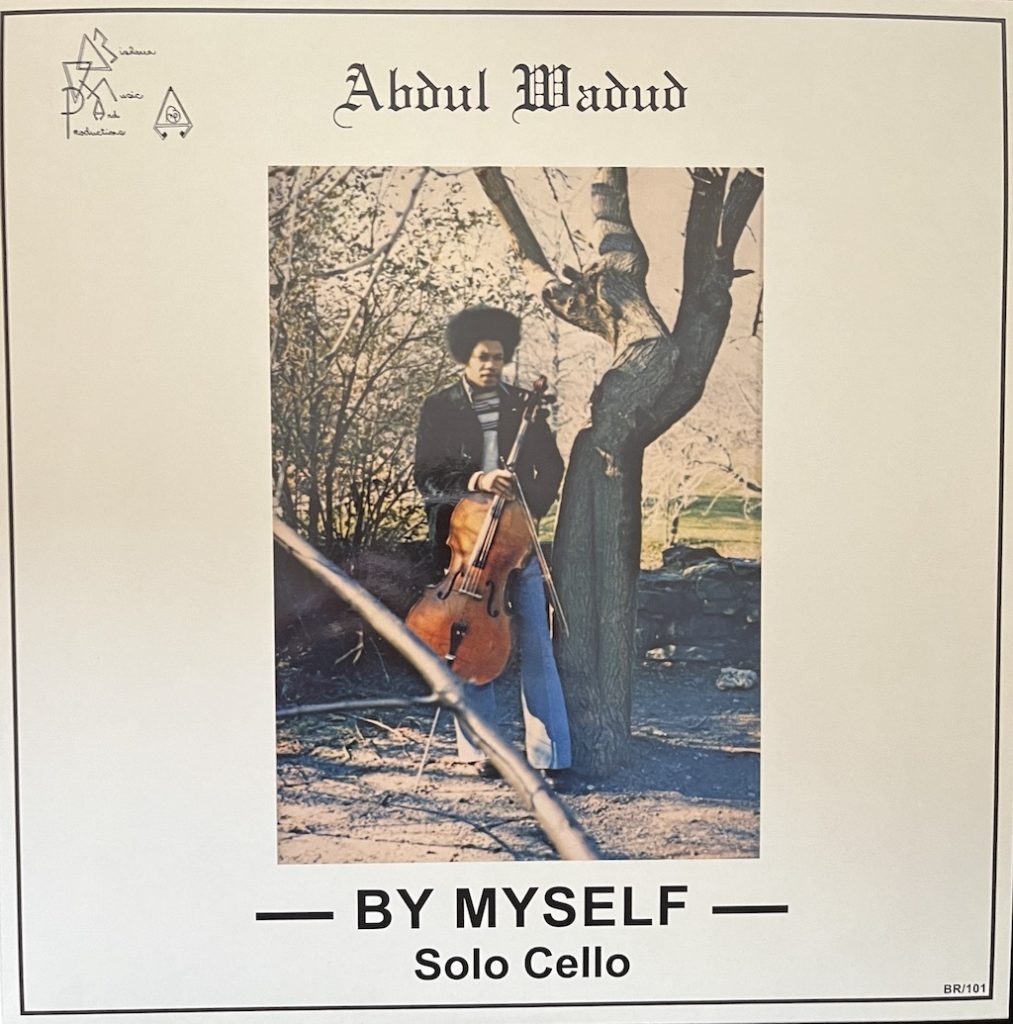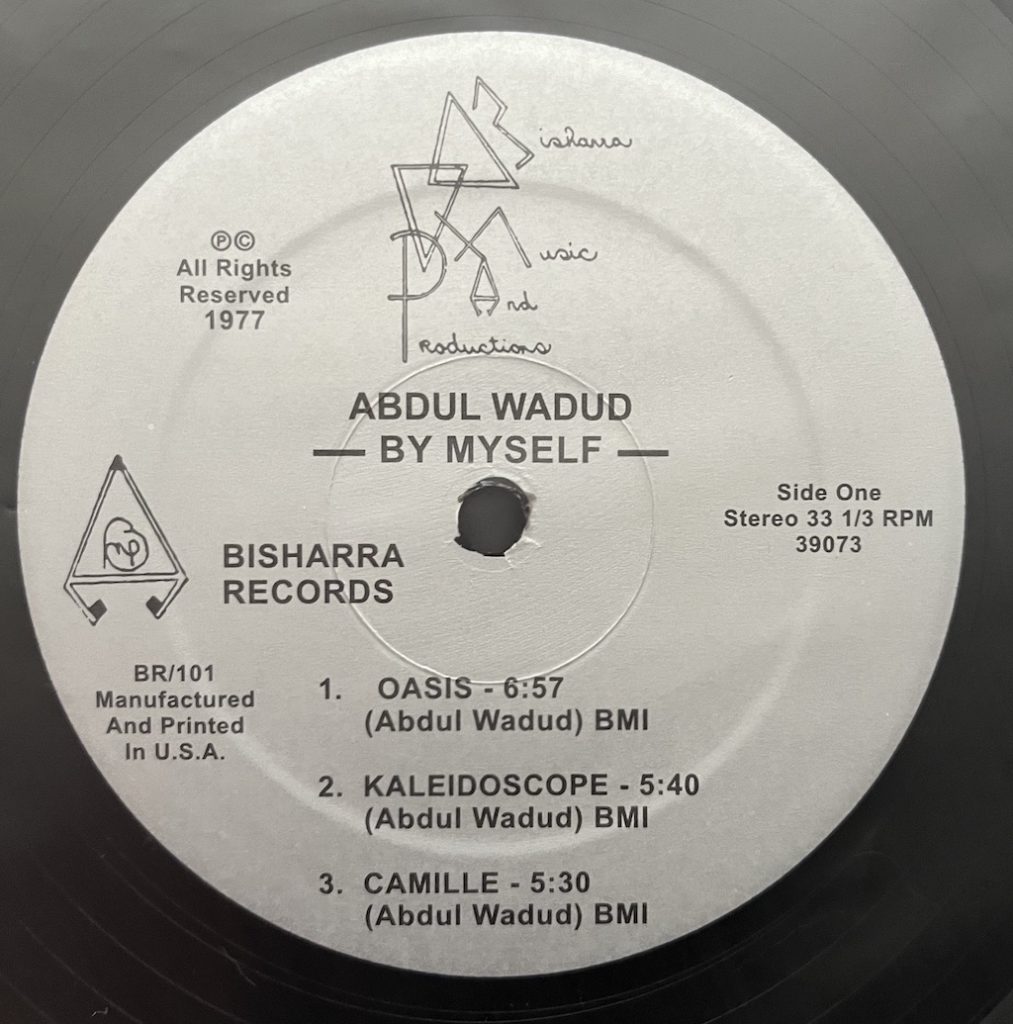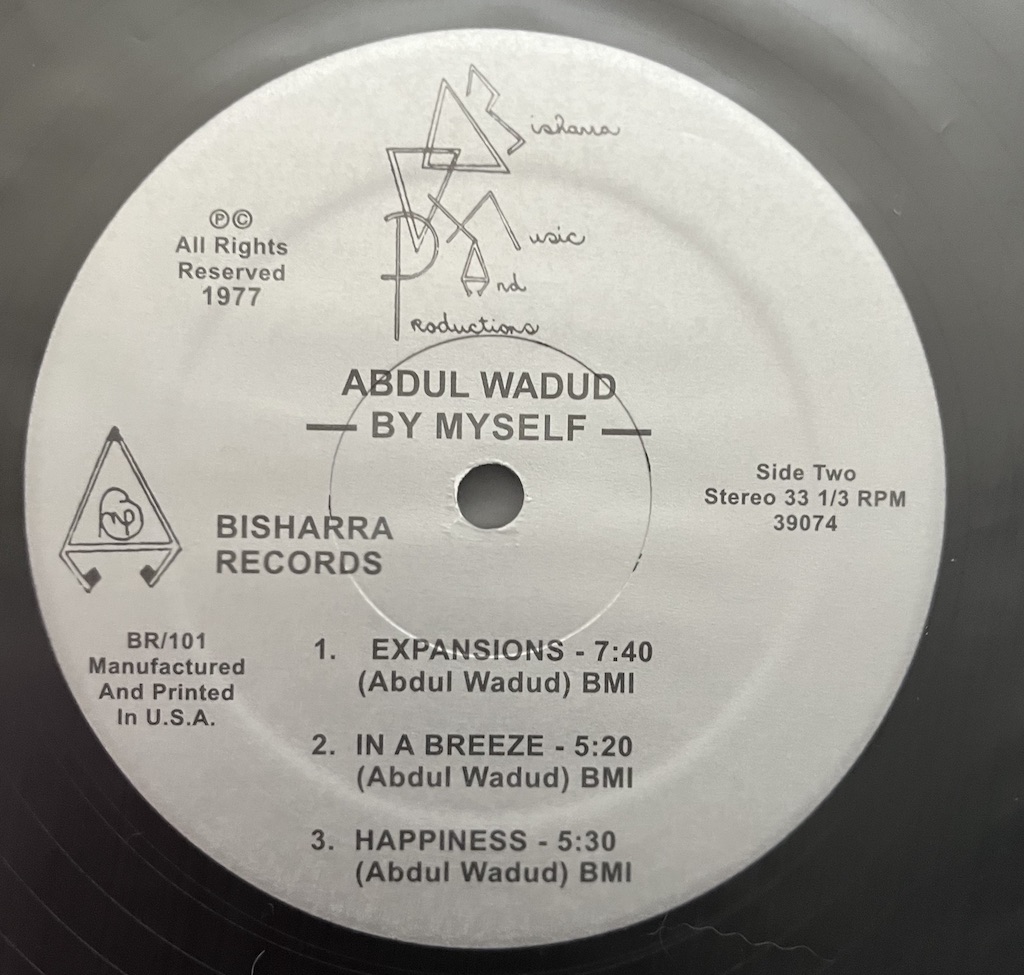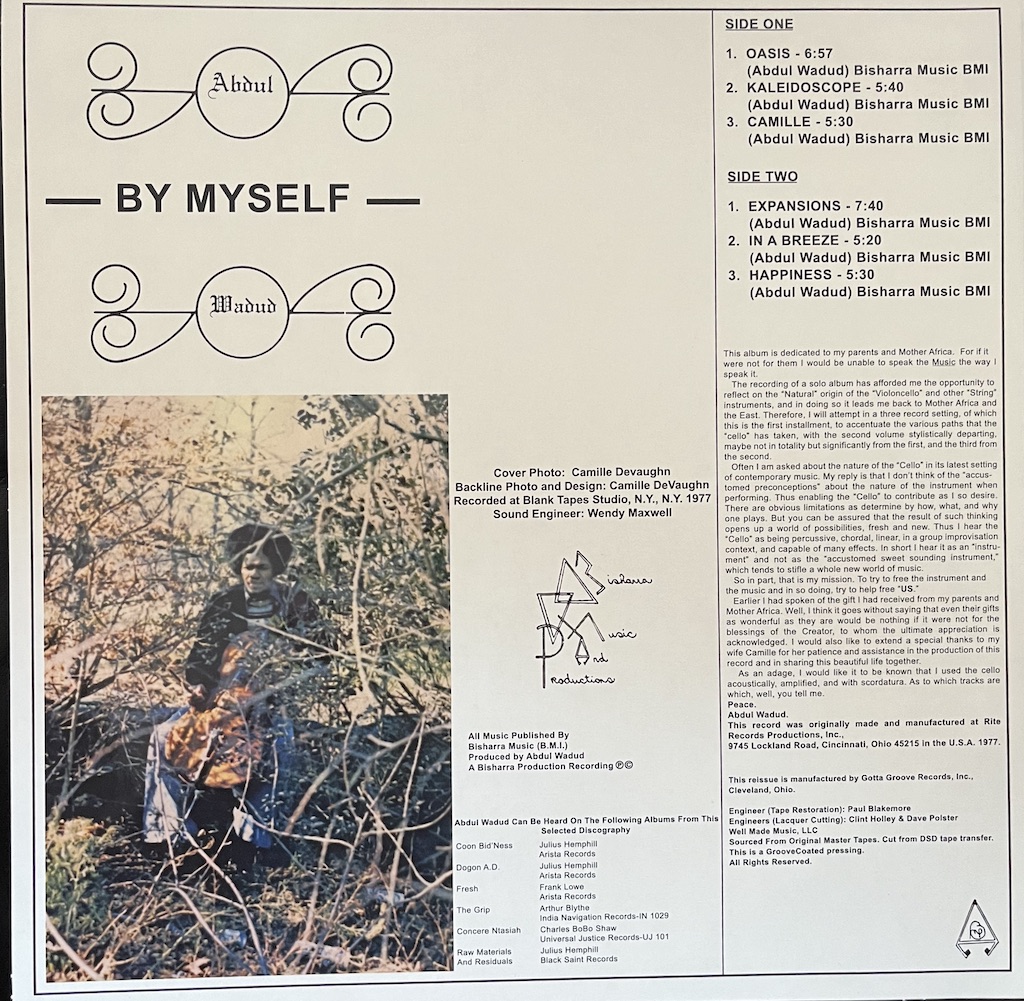By Myself Abdul Wadud

This was not an easy record to find until a recent reissue and it may not be everyone’s “cup of tea.” It is a combination of free jazz with classical elements on a solo cello, played by a master. Abdul Wadud had appeared on a number of other albums, both as a featured artist and as a sideman. I first got wind of his work as part of the Black Unity Trio – Al-Fatihah (1971) Salaam, an album that also deserves mention.
An original pressing is expensive. Gotta Groove did the recent reissue in cooperation with Wadud, who died before the record was released. DSD was used in the “conversion process” for mastering due to the condition of the master tape, which is claimed as the source. Nonetheless the sonics on the Gotta Groove reissue are impressive. Very quiet backgrounds.
Just for context, I grew up on Jacqueline du Pre, famous for her interpretations of Elgar. Much of it was heavily orchestrated, though. My other reference was Janos Starker. I tracked down early pressings from Period Records of his performance of Kodaly’s Sonata For Unaccompanied Cello, Opus 8. Both were brilliant musicians at the top of their craft.
This album is entirely different territory, though.
Wadud grew up in a musical family, studied formally at a number of well-known institutions and was, in reality, a multi-instrumentalist, but his most notable work was rendered on the cello. He easily moved from classical to free form jazz and was a sought-after sideman for decades. This solo album is really something else.
The original pressing appears occasionally. Since it was a private pressing, only 500-1,000 were likely pressed according to Wadud, see NYTimes May 1, 2023 Arts-Music. As of this writing, original pressings fetch around $1,000 or more, depending on condition.
The Gotta Groove reissue duplicates the label and though I don’t have an OG to compare against this reissue, sonically, few people will have that opportunity. (If I do get access to an original pressing, I will update this piece).
Even if you don’t have “ears” for “free jazz” I’d submit this is worth a listen—and it may capture your fancy, partly because the cello is such a beautiful instrument when well played and Wadud was a master. He mixes bowing with pizzicato (plucking the strings) and sets up rhythm, counterpoint, and melody as a single player. The cello also has enough range to stand on its own—drawn bowed parts and some surprisingly deep bass notes are presented with rich tonality.

Side one
The album starts with Oasis, a mix of plucked string riffs with a counterpoint on the bass string(s). It has an Eastern intricacy that is defied by bursts of intense note clusters-and that luscious tonally rich bass line that carries the piece forward.
Kaleidscope follows. It starts at the top registers, a short series of bursts of the shrieking sound of bowed strings that then embraces a wider range, touching the bass but constantly reaching the high notes at the same time. The combination of techniques used here is impressive—it sounds like Wadud is detuning the instrument while playing, and he uses a rhythmic thumping to carry the beat. We encounter some amazing deft plucked string bass lines that ascend while the instrument is being strummed. This is a showcase of skill, but it also works musically—a lot is going on, and somehow it makes sense. When he does melody, it is beautiful.
The side finishes with Camille- which starts like an old mountain fiddle except we get to enjoy a minor key motif and those rich bass tones, plucked against strumming on the lower registers. Some jazzy chords are struck and the refrain is somewhat addictive—it’s like a jazz guitar piece that has been transposed to the cello. This piece is stunning. And the silence between the notes is tomb-like- dead quiet.

Side two
Expansions begins this side. Intricate filigree of plucked notes against a bass line that on occasion sounds like the string is being pulled—and a passage of intensely fast bowing on the upper registers. Wadud seems favor the frequency extremes, only to dip into the body of the instrument’s middle—where we often hear the cello played—as a point of emphasis. This is one of the more complex pieces on the record—none are simple—but I take the title as a somewhat literal way of explaining what Wadud is doing here: he is pushing the limits of the instrument and playing technique. His fast runs up the scale are a marvel.
In A Breeze follows. It starts tranquilly and is far less frenetic than the other pieces. You can hear the tone Wadud pulls from the heart of the instrument against that dead quiet background.
Happiness ends the record. A top register fast bowing opens this track, followed by a squawk like series of runs, then we drop down to the deepest notes, full of rich sonority, then a thrumming which fades away to plucked and strummed strings that are reminiscent of bluegrass except for the bass notes, which give away the tone of the instrument being played. Little hooks on the upper registers play against the bass notes as the sounds fade into the ether.

All compositions on the record are attributed to Wadud. It must have been a revelation to see him play live. Thank goodness for this record, which was brought back to commercial life by the good folks at Gotta Groove. Aside from making the less commercial choice of a rare record to reissue, if this is a typical representation of the company’s output on vinyl, the future is bright.
It might be fun to talk with the folks that restored and recut this album. I’ll see if that is possible.
Bill Hart
Austin, TX
March, 2024
Leave a Reply
You must be logged in to post a comment.